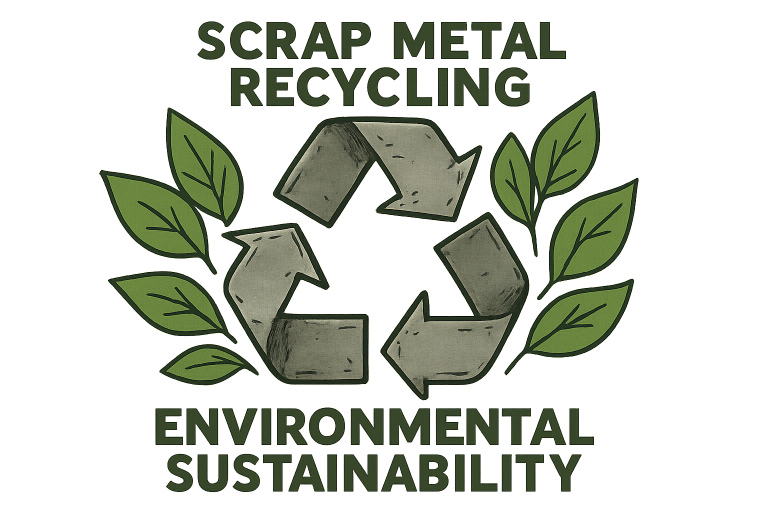Key Takeaways
- Recycling metals helps protect natural resources and lessens the reliance on environmentally damaging mining practices.
- Repurposed scrap metals play a major role in lowering greenhouse gas emissions and conserving energy.
- Modern innovations, from automated sorting to energy-efficient furnaces, are advancing the green impact of metal recycling.
Introduction
Scrap metal recycling stands as a forward-thinking solution, not only for managing waste but also for dramatically boosting environmental sustainability. This practice helps preserve ecosystems, slash pollution, and foster a circular, sustainable economy by transforming discarded metals into valuable resources.
Suppose you’re looking to make an immediate impact. In that case, services such as refrigerator recycling Sussex County NJ enable households and businesses to take the first step in proper scrap metal disposal—directly benefiting their surroundings.
With the demand for metals rising yearly, responsible recycling solutions become increasingly critical. The extraction of raw metals is invasive to our environment, causing deforestation, habitat loss, and extensive soil and water degradation.
Recycled metals, on the other hand, can replace the need for new mining, thus reducing the cascade of ecological damages that traditional mining operations inflict.
As technology evolves and awareness grows, communities and industries collaborate for more efficient and environmentally-friendly scrap management processes, saving resources and money along the way.
Conserving Natural Resources
Recycling scrap metal is fundamental to the conservation of finite natural resources. Mining virgin metals often means clearing forests, disrupting animal habitats, and causing soil erosion.
The environmental toll rises with every new mining project. When scrap metal is returned to the supply chain, fewer raw materials are needed, resulting in a direct reduction in environmental stress. For example, recycling just one ton of steel conserves roughly 1,134 kg of iron ore, 635 kg of coal, and 55 kg of limestone, contributing substantially to biodiversity preservation.
Reducing Greenhouse Gas Emissions
Manufacturing new metals is one of the most energy-intensive and polluting industrial processes worldwide. Greenhouse gases like carbon dioxide are often emitted during mining and smelting operations. Scrap metal recycling breaks this pattern by dramatically lowering emissions.
According to the U.S. Environmental Protection Agency, recycling steel can cut CO₂ emissions by 58%, and recycling aluminum reduces them by a staggering 95%. This considerable difference is pivotal in combating global warming and improving air quality for communities worldwide.
Energy Savings Through Recycling
Producing metals from recycled materials is much less energy-intensive than extracting and processing raw ore. For instance, generating aluminum from bauxite ore uses up to 95% more energy than using scrap.
These substantial energy savings also mean less fossil fuel consumption, further decreasing indirect emissions and environmental harm. Ultimately, this decreases the overall carbon footprint of the manufacturing and construction sectors, positioning scrap metal recycling as a core strategy for energy efficiency in industry.
Innovations in Recycling Technologies
Cutting-edge technology transforms how scrap metal is collected, sorted, and repurposed. Artificial intelligence and machine vision systems are now used to sort metals precisely, increasing purity rates and reducing contamination.
Advances like electric arc furnaces (EAFs), which use electricity instead of coal, make the melting process both cleaner and more energy efficient compared to traditional blast furnaces.
These innovations expand the potential for greater recycling rates and ensure that recovered metals meet industry standards for reuse. For further details on current technological trends, resources such as TDC Ventures provide insights into the future of metal recycling.
Economic Benefits of Scrap Metal Recycling
The economic incentives for recycling scrap metal are as powerful as the environmental ones. Recycling facilities generate jobs for local communities in collection, transportation, processing, and sales.
Since recycled metals are generally cheaper to produce than mining new materials, manufacturers and end consumers also save costs. On a national scale, the scrap recycling industry supports thousands of jobs and contributes billions to the economy every year.
Role in Renewable Energy Projects
The transition to renewable energy depends on reliable and sustainable materials. Metals like steel and aluminum—often recycled—are used in constructing solar panels, wind turbines, and electric vehicle components.
By sourcing these critical materials from recycled scrap, renewable energy projects further reduce their environmental impact, quickening the move toward a less carbon-intensive future.
Contribution to Sustainable Construction
Recycled metals are essential in the green building sector. They are used for everything from structural frames and roofing to aesthetic fixtures, helping builders reduce the carbon footprint of new construction.
Using scrap metal in construction not only diverts waste from landfills but also lowers overall project costs and supports the growing movement for sustainable architecture and green living environments.
Community and Health Benefits
Recycling metal scrap lessens the burden on landfills, limiting the risk of soil and water contamination. This, in turn, protects local water sources and cultivates healthier communities by reducing human and wildlife exposure to hazardous chemicals often leached from metal waste. Cleaner environments, lower pollution, and increased public awareness combine to enhance overall well-being and environmental stewardship at the community level.
Ultimately, embracing innovative scrap metal recycling practices yields significant environmental, economic, and social returns. Through continued advancements and community participation, society can effectively reduce its ecological impact and pave the way for a truly sustainable future.



